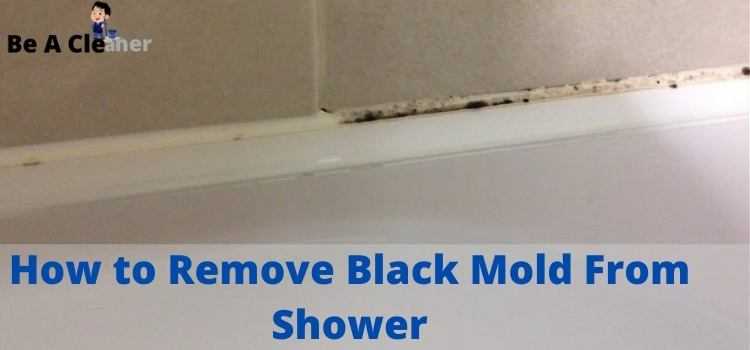· House Cleaning · 7 min read
How to Remove Mold from Silicone Rubber
In our daily life, we use varieties of silicon products. Starting from kitchen tools, home accessories, bath accessories, food accessories, and almost everywhere silicon rubber is used.
Because silicon is water-resistant and lasts longer. Can mold grow on rubber? Yes, it can.
Finding black mold on the rubber is inevitable and also gives a headache. Mold grows quickly if it finds warmth and moisture. Cleaning silicone molds isn’t an easy task.
You can’t remove them with normal water or detergent. It will need efforts to remove. So it’s better to take proper care at the first stage of mold growth.
If you don’t clean or maintain the silicon rubber before it grows more, removing mold from silicone becomes hard.
It will gradually damage the property and make them useless. And if you use mold products for a long time, it causes health problems for you.
So how can you remove mold from a silicon rubber?
In this article, we will tell you about cleaning silicone rubber by using some natural cleaning agents. Please scroll down to know them.
How to Remove Mold from Silicone Rubber?
We will share the three best ways to remove mold from silicone rubber. But before you implement them, make yourself ready to fight against mold. Because trying to clean mold without wearing proper gears can affect your health.
Mold can cause bad health reactions like irritation & itching to your skin and eyes. So wear goggles, gloves, and a mask to avoid taking harmful effects from mold.
When you remove mold from rubber, make sure the doors and windows are open, and airflows are coming in. natural air will take mold mites away. Let’s know the three best ways to remove mold from silicon rubber.
1. Vinegar
Vinegar is a popular cleaning that can clean any dirt and mold also. Using vinegar on silicon rubber is safe and easy to get rid of from mold.
So before you implement any other technique, give vinegar your first consideration. If your silicon rubber doesn’t have too much mold, you can remove it with vinegar.
We will suggest you use distilled vinegar and distilled water for this process. Distilled vinegar is affordable and will clean the mold without leaving any color.
And cleaning the residue with distilled water will ensure no mold is there. At last, using distilled water and vinegar will make sure the mold is gone thoroughly.
- Wear hand gloves, goggles, and a mask to protect yourself.
- Now pour some distilled vinegar on a spray bottle, and spray on the mold-affected area.
- Leave it for a few hours; around three to four hours should be enough.
- When time up, the mold is still there; take help from a soft stiff brush. Rub the mold with the brush and wipe it away with a wet cloth.
- Then again, spray some vinegar on the surface, sit for fifteen to twenty minutes, and then wash away with distilled water.
2. Ammonia
Again, we tell you before using any of these cleaning agents to remove mold from the silicon rubber and use the necessary gears.
Vinegar can affect you a little, but ammonia will harm your skin if you don’t wear the gear.
Ammonia is a tricky cleaning agent. It can clean mold off of silicone. But use it only when your silicon rubber has too many molds that are unremovable by using vinegar.
When you use ammonia like vinegar, make sure every door and window are open, and the place has a sound ventilation system. Ammonia is pretty harmful than vinegar, so it needs more air circulation.
- Take water and ammonia in equal quantities in a spray bottle, and mix them well.
- Spray the mixture on the mold directly, and rub the mold by using a stiff brush. Keep rubbing until the mold is thoroughly cleaned.
- Don’t wash immediately; leave it for ten to fifteen minutes and rub again.
- Now, if the surface is thoroughly cleaned, rinse it with distilled water. But if it still has mold repeat the same process.
- If windows and doors are unable to give you enough air circulation, take help from a fan.
3. Bleach
Black mold on silicone grows more and more with time. Bleach can remove those hard black mold.
But it is the most complex cleaning agent and dangerous for the skin. If your skin gets touched, the skin will burn.
Be prepared with gears and only use them when you are unsuccessful using all the above methods. Damage the silicon rubber also if you use it in too much quantity.
Don’t try to experiment with it; follow the steps correctly. And of course, make sure you are in a ventilated area. Use a fan for better results.
- Take two teaspoons of bleach and mix it with 10-liter water. If you want to make, less solution takes half a teaspoon of bleach and mix it with 2.5-liter water. Mix it until the Bleach dissolves.
- Spray the mixture on the mold surface. Take a soft bristle brush and rub the surface well. Rub until all the mold is clear. Or take a sponge and damp it with the solution, then use the sponge and wipe away as much as mold you can.
- Leave it for fifteen minutes. Again rub the surface or use a sponge to wipe away
- Rinse with water and dry with natural air.
- If the silicon rubber still has mold, repeat the same process.
Warning !!!
As we said earlier, ammonia and Bleach both are effective cleaning agents but harmful. It would be best if you tried to avoid using these two ingredients as much as you can.
And if it’s necessary to use these cleaning agents, follow the mentioned steps accurately.
If possible, use vinegar to remove mold from silicon rubber. Vinegar will take a longer time to kill the mold, but it won’t cause any health problems for you.
Further, take proper care of silicon rubber, so it doesn’t need the help of ammonia and bleach.
How to stop silicone rubber from mold growth or clean it before it grows more?
Nothing more dear! Keep silicon rubber products in a dry place, and anyhow, don’t let them be in touch with warmth and moisture.
And if somehow some dirt gets into it, clean that right away. Use vinegar to clean the dirt; damp cloth or sponge into vinegar and wipe out the silicon rubber surface.
Frequently Asked Questions
Does Vinegar Harm Rubber?
Yes, vinegar harms rubber. Never use vinegar to clean a rubber item mistakenly. Vinegar has acid that will eat away rubber.
Does Baking Soda Damage Silicone?
No baking soda doesn’t damage silicon. Baking soda is a great cleaning agent. You can use baking soda to clean silicon products.
Can I Mix Baking Soda and Vinegar to Clean?
Yes, you can mix baking soda and vinegar to clean anything. Both baking soda and vinegar can clean thoroughly any dirt and remove stain from anything.
What is the Best Cleaner for Mold in The Shower?
If we suggest DIY to clean a mold in the shower, it will be Bleach and water. Take some bleach and water in a spray bottle, mix them well and spray on the mod of the shower. It will clean the mold in the shower in just a minute without any damage.
How Do I Clean Black Mold in Shower Silicone?
There are so many ways to clean black mold on silicone. But in my opinion, the best easy way to clean black mold in the shower silicon is using distilled white vinegar. It’s a powerful cleaning agent; it can remove any dirt, stain, and shower mold.
Final Words
Removing silicone rubber mold is not a difficult task, but it’s a dangerous task. By using the mentioned three ingredients, you can easily remove molds from the silicon rubber.
Do follow all the steps just as we said and get rid of mold. We hope our article helped you in solving your problem, try our method and see the results.
And try not to let mold grow on silicon rubber too much; clean them before it grows more. Stay safe and free of problems.




